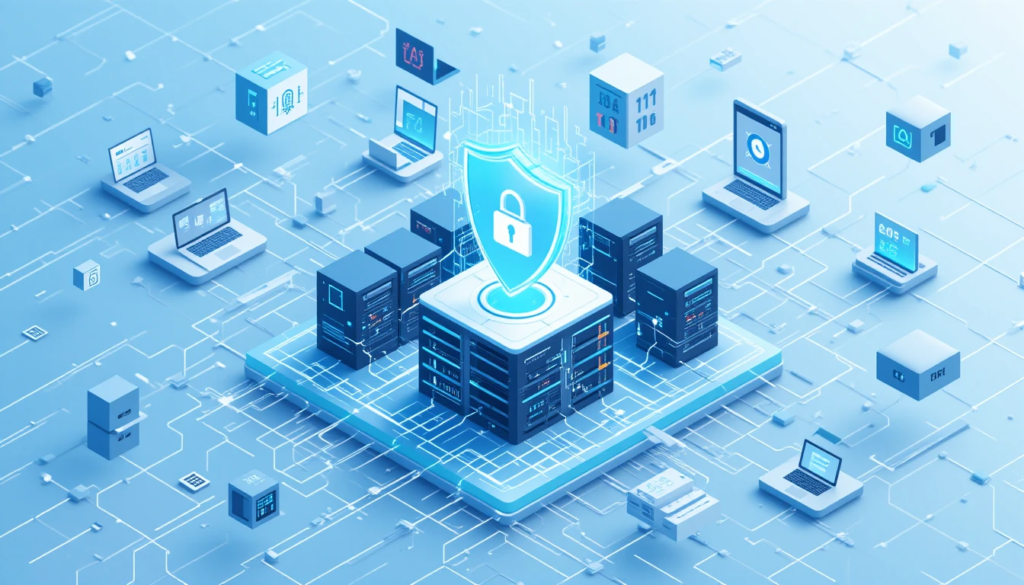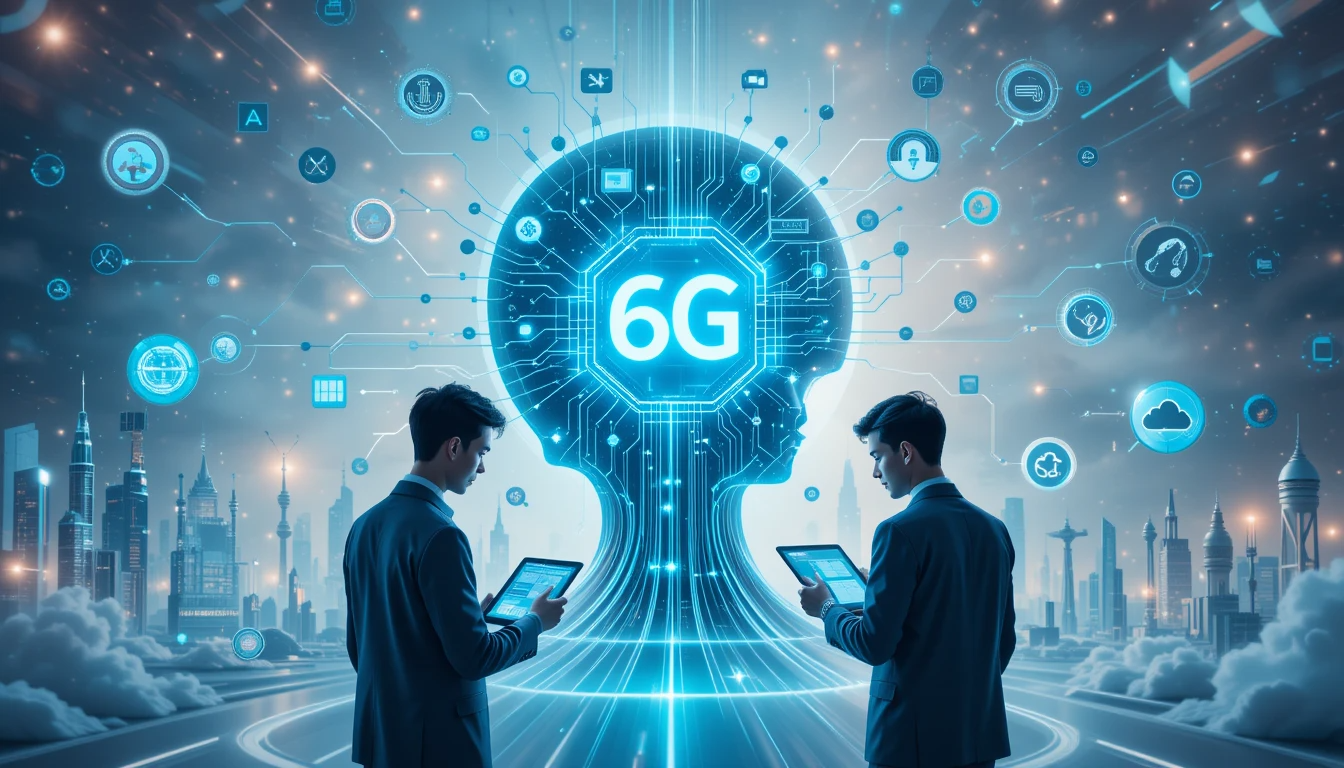As the globe holds its breath in anticipation of the future development of wireless communication, 6G technology is poised to revolutionize the mobile experience in unimaginable ways. With its theoretical speeds of up to 100 times the speed of 5G, almost instantaneous latency, and everywhere connectivity, 6G is positioned to usher in a new era of innovation. From automation driven by AI to hyper-real virtual realities, businesses and consumers can both benefit from this revolutionary step forward. But what exactly will 6G bring, and how will it transform the landscape of mobile use? Let’s explore the possibilities.
Unparalleled Speed and Connectivity
Its most renowned feature, however, is arguably its record-breaking speed. While 5G networks of today can offer up to 10 Gbps, 6G will offer up to an astronomical 1 terabit per second (Tbps) and enable real-time data transmission with minimal or no delay.
- Blistering downloads and uploads: Envisioning has the ability to download an entire 8K movie in under a second or upload huge data files in the blink of an eye.
- Real-time cloud computing: Cloud applications will operate seamlessly, and storage and processing limitations will be a thing of the past.
- Greater global coverage: With the help of satellite and air-borne networks, 6G will offer quality connectivity even in remote areas where traditional infrastructure is nonexistent.
ABI Research, in a study, states that 6G can offer speeds up to 100 times faster than 5G, completely altering user expectations from mobile internet.
Near-Zero Latency for Real-Time Applications
Latency—the length of time for data to travel from transmitter to receiver—has gone down with each successive wireless generation. Whereas 5G reduced latency to just over 1 millisecond (ms), 6G will bring it even lower, with astounding sub-millisecond latency.
Why does it matter?
- Immersive virtual and augmented reality (VR/AR): Picture playing games, shopping, or office work in virtual spaces that cannot be differentiated from real life.
- Enabled remotely conducted complex operations: Physicians will perform intricate surgeries remotely through robot-based platforms aided by real-time, ultra-durable data transport.
- Smart cities and smart cars: Live vehicle-to-vehicle (V2V) and infrastructure-to-vehicle (I2V) communications will make transport infrastructure and systems smart and safe.
The Next G Alliance is convinced that the ultra-low latency will revolutionize healthcare, autonomous industries, and the metaverse by facilitating the interaction of the digital and physical worlds in real time.
AI and Machine Learning Integration

6G will be the first wireless network to natively integrate artificial intelligence (AI) and machine learning (ML) into its core. These technologies will optimize network performance, predict maintenance, and customize user experiences.
- Network 6G: AI networks will automatically change the bandwidth and customize data streams based on user behavior and network conditions.
- Improved security: Algorithms based on machine learning will detect and remove cyber attacks in real-time, protecting mobile networks from attack.
- Edge computing intelligence: Devices will analyze information closer to the source, reducing the need for centralized cloud services and optimizing efficiency.
By 2030, over 75% of all mobile traffic will be managed autonomously by AI, based on a report by Gartner, making networks smarter and more responsive than ever.
Extended Reality (XR) Immersive Experience
The 6G generation will revolutionize augmented reality (AR), virtual reality (VR), and mixed reality (MR) experiences to a whole different level with both real and virtual worlds merged.
What’s new?
- Holographic communication: Video calls will be redefined as life-like 3D holograms, allowing for more natural and interactive remote communication.
- Virtual environments that completely immerse us: High-speed, low-latency connectivity will render metaverse applications indistinguishable from life.
- Future generations of entertainment and gaming: With processing split between devices and the cloud, lag-free, hyper-realistic gaming will be standard.
Statista estimates that by 2035, the global XR market will be worth $1.5 trillion, driven in large measure by 6G and immersive technology innovation.
Energy-Efficient and Sustainable Networks
With the advancement of technology, so are worries regarding energy usage and environmental sustainability. 6G networks are being planned with sustainability in mind, which will provide:
- Energy-efficient transmission: Smart antennas and resource allocation via AI will reduce the wastage of energy, and 6G will consume 50% less energy than 5G.
- Green infrastructure: Future communication networks will be driven by solar and wind-based renewable energy.
- Reduced carbon footprint: Edge computing and AI optimization will process locally, reducing energy-guzzling cloud dependency.
The International Telecommunication Union (ITU) emphasizes that sustainability will be prioritized in 6G development, so technological progress is not at the cost of the environment.
Ultra-Secure Communications

Security has been a big concern with mobile networks, and 6G will take cybersecurity to a whole new level.
Key developments
- Quantum encryption: Quantum cryptography will render security unbreakable, protecting sensitive data from cyberattacks.
- Decentralized security models: Blockchain technology will enable secure and tamper-proof data transfers.
- AI-driven threat detection: Self-healing security systems will detect vulnerabilities and stop cyber threats from occurring.
Forbes explains that by 2030, 6G networks with quantum-secured networks will protect finance, healthcare, and government sectors from cyber espionage.
Empowering Smart Cities and IoT
With billions of IoT devices connected worldwide, 6G will be at the core of empowering completely autonomous smart cities.
- Real-time smart traffic management: AI-based smart grids will reduce traffic jams and optimize traffic flow.
- Public safety enhanced: Surveillance and emergency response systems will be real-time, enhancing the security of cities.
- Smart farming: Farmers will use 6G-connected sensors to monitor crops, soil, and water usage with never-before-seen precision.
The World Economic Forum predicts that over 125 billion devices will be networked via ultra-high-speed networks by 2030, revolutionizing industries as a whole.
The Start of the 6G Era
6G technology can transform the mobile experience with record-breaking speed, omnipresent connectivity, ultra-low latency, and intelligent automation. From holographic communication in real-time to transforming autonomous transport, the future is endless.
While 6G is still in the nascent stage, experts foresee its deployment by 2030, which will change everything from how we work, interact, and experience the digital way of life. With optimizations driven by AI, XR experiences, and sustainable networking technologies, 6G would not be an enhancement but a shift in the paradigm of the world connecting.
As businesses and consumers prepare for this revolution, one thing is for sure: the future of mobile technology is smarter, faster, and more immersive than ever.
